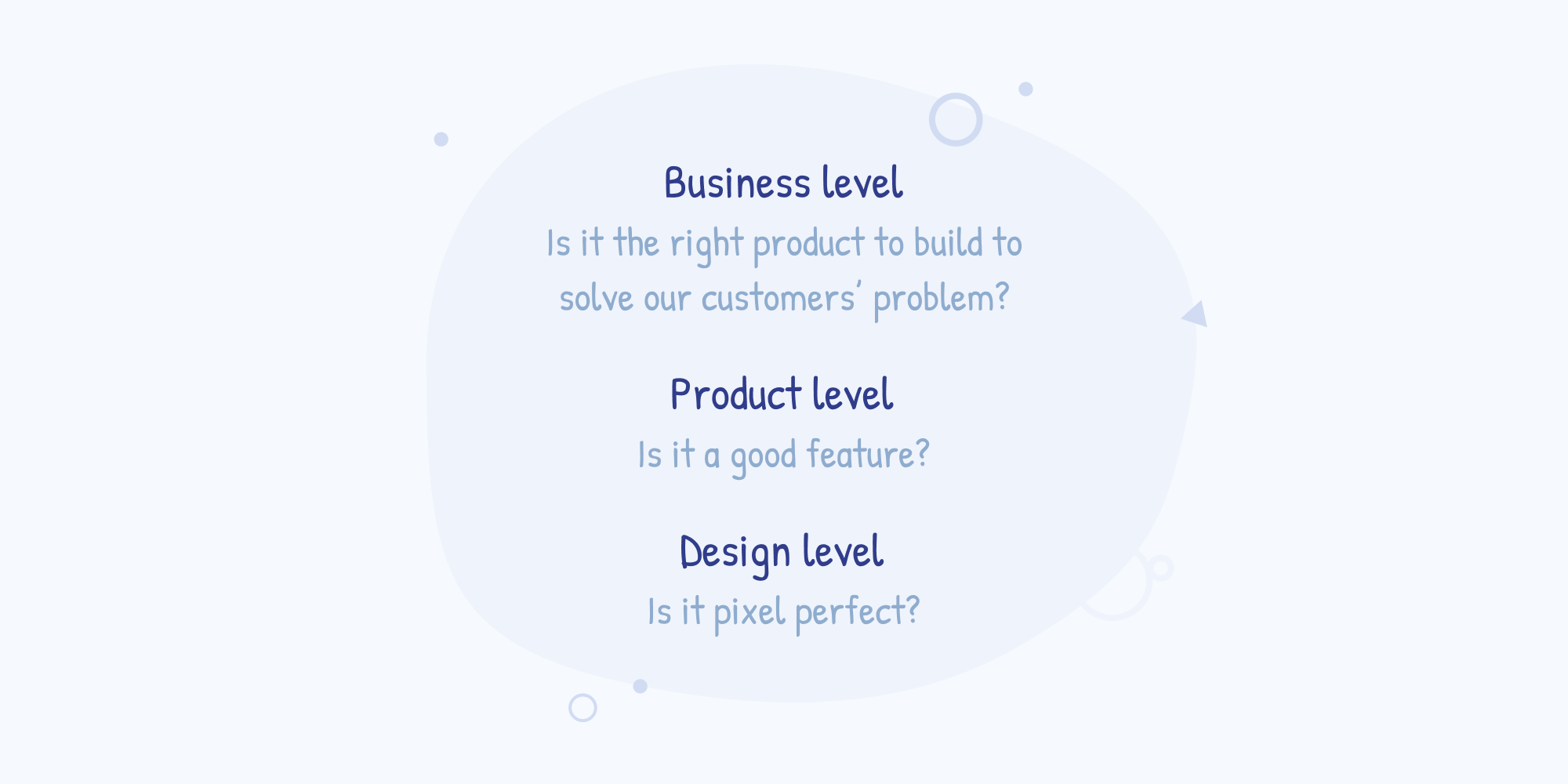As you progress in your career, you may find that the growth areas become less obvious. As a young designer, focusing on the craft makes sense, but once you become strong enough in it, soft skills come into play. Delivering value can be done outside of your core craft, and while many soft skills are essential (collaboration, communication, etc.), I believe business can help designers go to the next stage.
At some point in your job, you’ll probably want to have a say in what your company is building.
Having a business level mindset will help you have a say in product decisions while eventually help you build better products, and have an easier time making design trade-offs.
What do designers bring to the business side?
If you’re trying to get into business discussions, you may be asked what designers bring to the table. After all, it’s easier for people to understand our value by looking at the artifacts we produce than to think about how design can influence business.
Ultimately, designers are the voice of the end users and the guardians of their experience.
Design has become a competitive advantage, the days of shipping a product “design by devs” are long gone. We can see design-driven companies at the top of the food chain, and having a “good design” has become a basic expectation for both B2B and B2C customers. The quality of the apps (mobile, desktop, or in the browser) has drastically increased over the last decade.
If products are offering similar value, users will most likely choose the one with the best user experience.
Shifting our mindset
It’s so easy to get caught up in designing a great product. I remember early in my career, all I cared about was the design of the product. It had to look slick, feel good, and more importantly, getting likes on Dribbble. All the feedback I was seeking came from other designers, and we were mostly focused on the design itself, which led to designing for designers instead of real world users.
As designers, we’re trained to think “outside the box” and see things a little differently. Let’s embrace that skill and try to see product design from a different angle.
There are really three approaches you can take, and while none of them are wrong, one is a clear winner:
- Thinking at the design level: You focus 100% of your time on design. You perfect it, make it look and feel great, double-check that it’s pixel perfect. Let’s say you’re designing an app, in this mindset you’ve made a slick, beautiful interface.
- Thinking at the product level: You collaborate with engineers, researchers, and product managers to create the best possible product. With this mindset, instead of a nice interface, you’ve made features that make sense with the overall app.
- Thinking at the business level: You’ll aim to solve customers’ problem and have a positive business impact. With this mindset, you’ll be focused on helping users accomplish precisely what they need to do, and ensuring your app stands out from competitors’ option. You’ll also be ready making design trade-offs. What if the design is rough around the edges, not the best usable experience, but is quick to build, solves the problem and can have a positive business impact immediately? What if these design trade-offs could buy you speed to market and become a competitive advantage?

With this in mind, you can ensure that a few key questions will be answered:
- Why should we build this product/feature?
- What evidence do we have to support this?
- Once built, how do we know we built it right?
- How is it different from our competitors?
- How will it have a positive business impact?
Those questions will bring a far more different outcome than to wonder if the user interface is slick enough, or if you’re using the right color scheme.
Goodbye design, hello meetings
Unfortunately, switching to this new mindset will come with a price: you will spend a lot more time in meetings. In fact, it might already be your case. I consistently hear how designers are busy not designing, and how severe it is.
What if it was ultimately positive?
You’re designing as long as you’re solving people’s problem, whether it happens while producing designs or spending time in meetings.
You can also use this opportunity to influence the business through design, learn other job practices and perspectives, and get feedback from non-designers.
Making the best use of our time
Nowadays I can confidently say that I don’t produce design artifacts most of the time, but I’m helping my company solve customer’s problems with the intent that it will eventually have a positive business impact (having the customers’ needs at heart).
This takes the form of meetings, brainstormings, working sessions, strategy, you name it. And this will eventually lead to producing design, but creating design artifacts may not be the most important thing for your company.
If you’re already spending most of your time in meetings, think about how you’d use them to influence the business through design. If you’re working toward solving people’s problems and having a positive business impact, then you’ll be delivering value even though it’s not directly through moving pixels!



